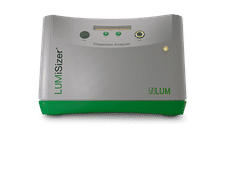Hot liquids release potentially harmful chemicals in polycarbonate plastic bottles
Advertisement
When it comes to Bisphenol A (BPA) exposure from polycarbonate plastic bottles, it's not whether the container is new or old but the liquid's temperature that has the most impact on how much BPA is released, according to University of Cincinnati (UC) scientists. Scott Belcher, PhD, and his team found when the same new and used polycarbonate drinking bottles were exposed to boiling hot water, BPA, an environmental estrogen, was released 55 times more rapidly than before exposure to hot water.
"Previous studies have shown that if you repeatedly scrub, dish-wash and boil polycarbonate baby bottles, they release BPA. That tells us that BPA can migrate from various polycarbonate plastics," explains Belcher, UC associate professor of pharmacology and cell biophysics and corresponding study author. "But we wanted to know if 'normal' use caused increased release from something that we all use, and to identify what was the most important factor that impacts release."
"Inspired by questions from the climbing community, we went directly to tests based on how consumers use these plastic water bottles and showed that the only big difference in exposure levels revolved around liquid temperature: Bottles used for up to nine years released the same amount of BPA as new bottles."
BPA is one of many man-made chemicals classified as endocrine disruptors, which alter the function of the endocrine system by mimicking the role of the body's natural hormones. The chemical - which is widely used in products such as reusable water bottles, food can linings, water pipes and dental sealants - has been shown to affect reproduction and brain development in animal studies.
The UC researchers found that the amount of BPA released from new and used polycarbonate drinking bottles was the same - both in quantity and speed of release - into cool or temperate water. However, drastically higher levels of BPA were released once the bottles were briefly exposed to boiling water.
"Compared to the rate of release from the same bottle, the speed of release was 15 to 55 times faster," explains Belcher. Prior to boiling water exposure, the rate of release from individual bottles ranged from 0.2 to 0.8 nanograms per hour. After exposure, rates increased to 8 to 32 nanograms per hour. Belcher stresses that it is still unclear what level of BPA is harmful to humans. He urges consumers to think about how cumulative environmental exposures might harm their health.
Original publication: Toxicology Letters 2008.
Most read news
Topics
Organizations
Other news from the department science
These products might interest you

Get the chemical industry in your inbox
By submitting this form you agree that LUMITOS AG will send you the newsletter(s) selected above by email. Your data will not be passed on to third parties. Your data will be stored and processed in accordance with our data protection regulations. LUMITOS may contact you by email for the purpose of advertising or market and opinion surveys. You can revoke your consent at any time without giving reasons to LUMITOS AG, Ernst-Augustin-Str. 2, 12489 Berlin, Germany or by e-mail at revoke@lumitos.com with effect for the future. In addition, each email contains a link to unsubscribe from the corresponding newsletter.



























































